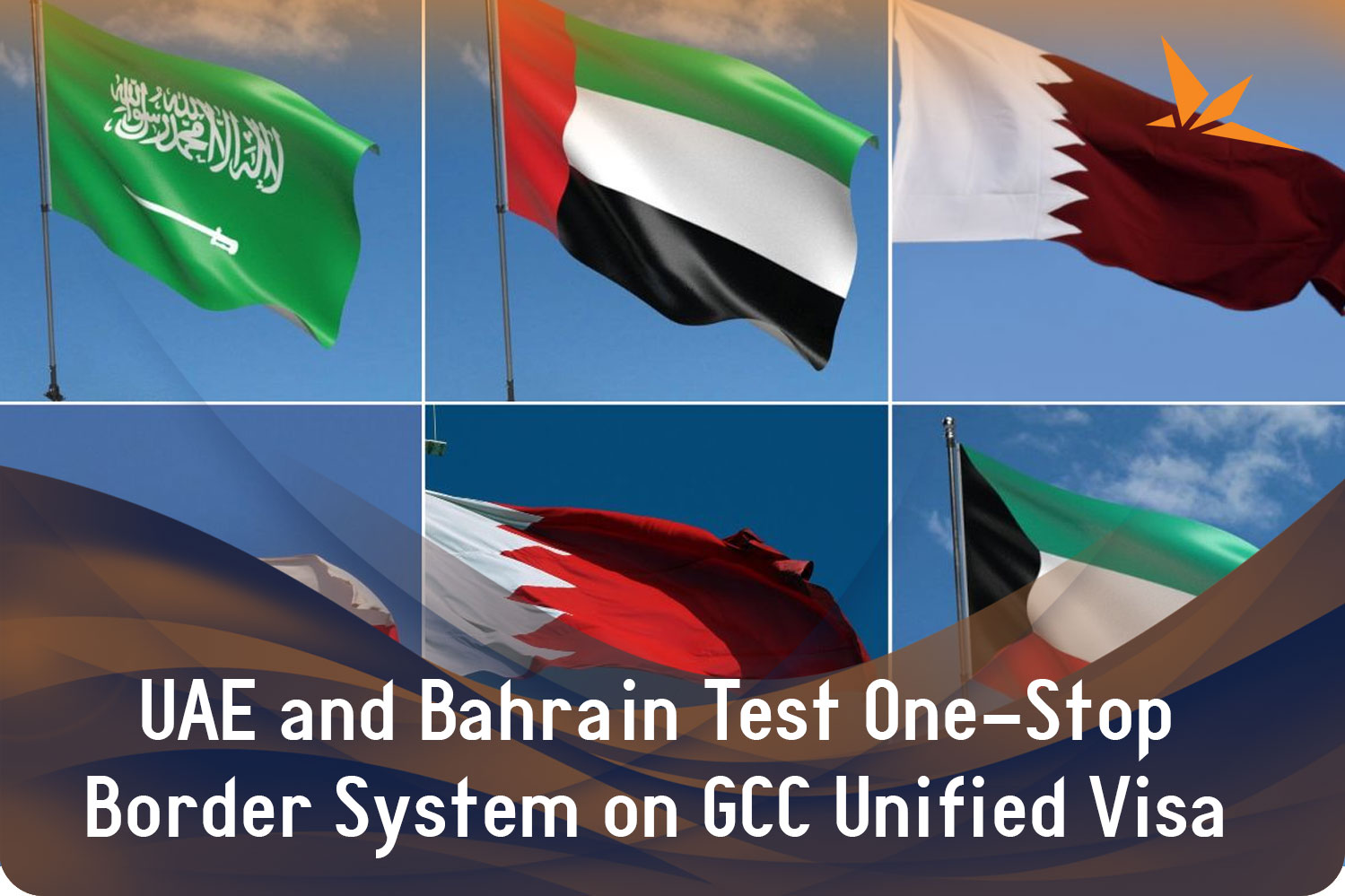
The Gulf Cooperation Council has approved a groundbreaking "one-stop" travel system that marks the first concrete step toward creating a unified Gulf visa system comparable to Europe's Schengen arrangement. Starting December 2025, the United Arab Emirates and Bahrain will pilot this revolutionary system for air travel, potentially paving the way for seamless movement across all six GCC nations.
What Is the One-Stop Travel System?
The one-stop system represents a paradigm shift in how travelers move between Gulf nations. Under this framework, passengers will complete all immigration, security, and customs procedures at a single checkpoint before departure—eliminating redundant inspections upon arrival.
Key Features:
✓ Single Checkpoint Processing: Complete all travel formalities at departure airport only
✓ No Arrival Procedures: Land, collect luggage, and exit without additional checks
✓ Shared Digital Platform: Electronic system linking all member states
✓ Violation Tracking: Unified database for travel-related infractions
✓ Initial Focus: GCC citizens traveling within the region
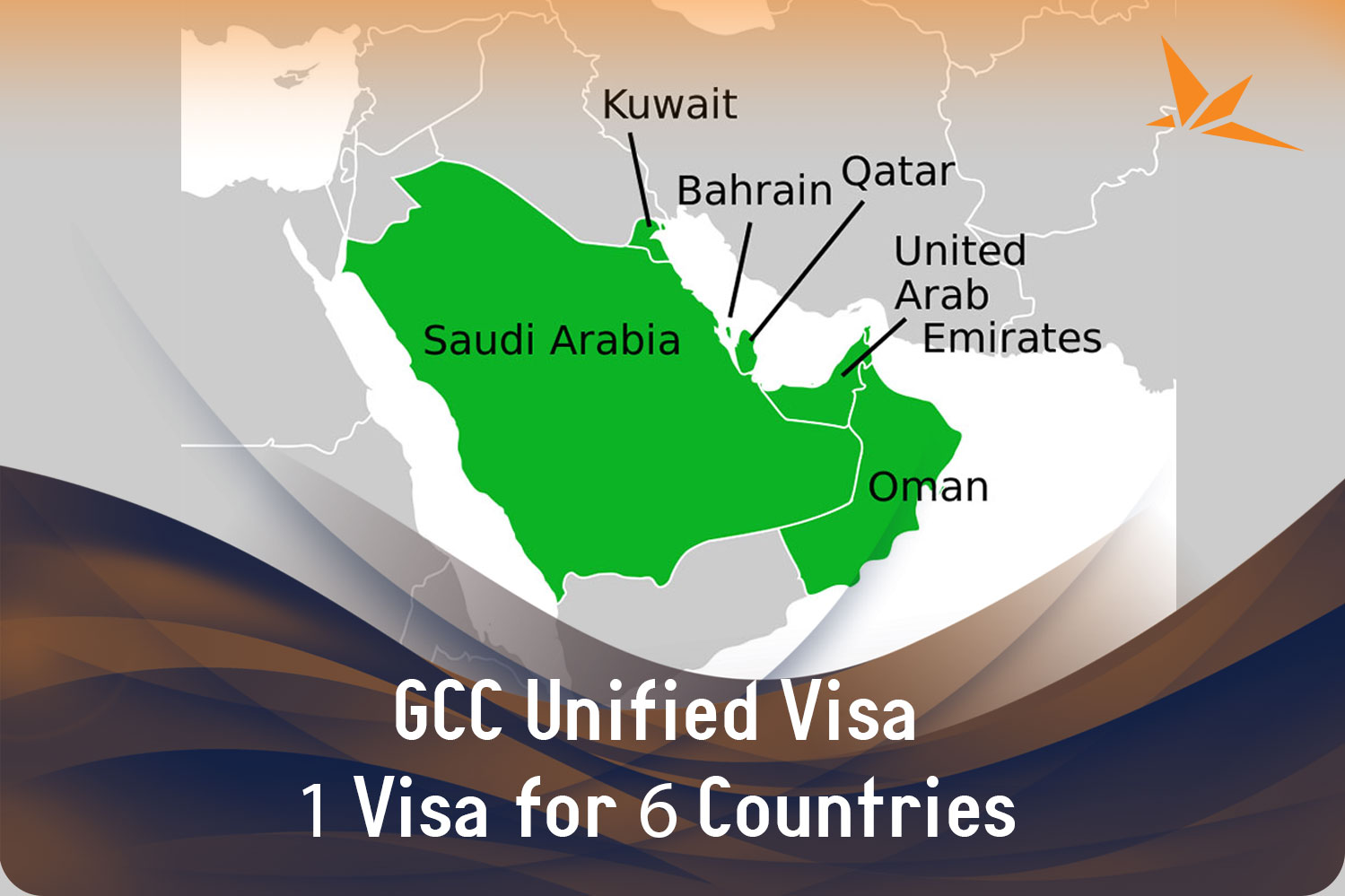
The Dual Revolution: Understanding Two Separate But Complementary Initiatives
Initiative #1: One-Stop Travel System (December 2025)
- Target Users: GCC citizens
- Purpose: Streamline border processes
- Technology: Shared electronic verification platform
- Trial Phase: UAE-Bahrain air routes
Initiative #2: GCC Unified Tourist Visa (Q4 2025 Trial)
- Official Name: GCC Grand Tours Visa
- Target Users: International tourists and GCC residents
- Coverage: All six member states on single permit
- Validity: Expected 30-90 days
- Application: Fully digital platform
Why the GCC Schengen-Style Visa Matters Now
The Dubai visa market alone welcomed 7.15 million visitors between January and April 2025—a 7% year-on-year increase. The unified GCC visa system aims to amplify these numbers exponentially by transforming six separate destinations into one integrated tourism ecosystem.
"A unified visa would effectively integrate six destinations into a single, connected itinerary," said Victor Abou-Ghanem, CEO of Story Hospitality. "It would reduce the administrative frictions that currently constrain multi-stop travel."
Economic Impact Projections
| Sector | Expected Growth |
|---|---|
| Tourism Employment (UAE) | 833,000 (2024) → 1 million (2030) |
| Commercial Tourism Licenses (UAE) | 275% increase since 2020 |
| Regional Visitors to UAE (2024) | 3.3 million from GCC countries |
| Total Projected Visitors by 2030 | 128.7 million across GCC |
The Strategic Timeline: From Concept to Reality
2023: GCC ministers unanimously approve unified tourist visa framework
June 2025: Ministers meet in Riyadh to finalize technical specifications
September 2025: GCC Secretary-General confirms final approval phase
November 13, 2025: One-stop system approved for UAE-Bahrain pilot
December 2025: Trial launches for air travel between UAE and Bahrain
Q4 2025: GCC Grand Tours Visa pilot phase begins
2026: Expected full implementation of unified tourist visa
2030: GCC Railway network completion to support seamless overland travel
How the Gulf Visa System Compares to Schengen
Similarities:
- Single visa for multiple countries
- Digital application platform
- Shared security protocols
- Focus on tourism facilitation
- Regional economic integration
Key Differences:
- Internal Borders: GCC maintains border checkpoints (initially)
- Sovereignty: Each state retains final admissibility decisions
- Scope: Tourism-only initially (Schengen includes work/study)
- Development Stage: Just beginning (Schengen established 1995)
Behind the Scenes: The Technology Making It Possible
The unified electronic platform represents a massive technological undertaking requiring:
Biometric Database Integration: Facial recognition and fingerprint systems across all airports
Real-Time Data Sharing: Instantaneous communication between six sovereign nations
Security Harmonization: Aligned threat assessment protocols
Revenue Coordination: Equitable distribution systems for visa fees
Legal Framework: Standardized overstay penalties and enforcement
The Dubai Visa Advantage: Why the UAE Leads
The UAE's selection as a pilot country wasn't accidental. With 39,546 commercial licenses in tourism-related sectors by September 2025, the Emirates has demonstrated unparalleled readiness:
- Infrastructure Excellence: World-class airports and connectivity
- Digital Leadership: Advanced e-government systems
- Tourism Expertise: Decades of hospitality experience
- Economic Diversification: Strong non-oil revenue streams
- Global Appeal: Consistent ranking among top tourism destinations
What This Means for Different Traveler Categories
International Tourists
Before unified visa: Apply for separate visas for Dubai, Riyadh, Doha, Muscat, Kuwait City, and Manama
After unified visa: One application, six destinations
GCC Residents (Non-Citizens)
Current situation: Complex visa requirements varying by country
Future benefit: Emirates ID or equivalent becomes regional travel document
Business Travelers
New opportunity: Seamless "bleisure" trips combining work and leisure across multiple Gulf capitals
Religious Tourists
Enhanced access: Combine Hajj/Umrah in Saudi Arabia with cultural tourism across other GCC states
Challenges and Considerations
Despite enthusiasm, experts acknowledge significant hurdles:
Technical Complexity: Integrating systems across nations with different technological standards
Security Concerns: Balancing openness with each country's unique threat assessments
Political Coordination: Six sovereign states must maintain consensus
Infrastructure Readiness: Not all GCC airports equally prepared for seamless processing
Revenue Sharing: Determining fair distribution of visa fees and economic benefits
The Bigger Picture: Regional Integration Beyond Visas
Complementary Projects:
- GCC Railway: High-speed rail linking all capitals by 2030
- Maritime Connectivity: Enhanced ferry services (Bahrain-Qatar route already operational)
- Smart Airport Technology: AI-powered processing at all major hubs
- Cultural Exchange Programs: Youth mobility and educational partnerships
Industry Expert Perspectives
Jassim Al-Budaiwi, GCC Secretary-General, emphasized that the initiatives "reflect our collective ambition to keep pace with technological developments and security requirements while facilitating easier mobility."
Abdulla bin Touq Al Marri, UAE Minister of Economy and Tourism, described the unified visa as "a strategic step towards deeper regional integration" that positions the Gulf as a single, globally competitive tourism hub.
Raymond Khoury from Arthur D. Little highlighted how Saudi Arabia's Vision 2030 mega-projects—including NEOM, Red Sea resorts, and AlUla—stand to gain significantly from simplified multi-country tourism.
The December 2025 Trial
As December approaches, aviation authorities in the UAE and Bahrain are finalizing operational details:
- Specific airports haven't been named but likely include all international gateways
- Training programs for immigration and security personnel
- Public awareness campaigns about new procedures
- Technology integration testing
- Contingency protocols for technical issues
Success metrics will determine expansion timeline to Saudi Arabia, Kuwait, Oman, and Qatar.
The convergence of the one-stop travel system and the GCC Schengen-style visa represents more than administrative convenience—it signals the Gulf's emergence as a unified destination capable of competing with established multi-country tourism regions.
For travelers worldwide, the message is clear: soon, exploring the architectural marvels of Dubai, the ancient forts of Oman, the futuristic projects of Saudi Arabia, the cultural heritage of Bahrain, the modern skyline of Doha, and the authentic hospitality of Kuwait will require just one visa application.
The December trial isn't just testing technology—it's testing whether six nations can truly move as one toward a shared future of prosperity through tourism.
;More Travel News
-
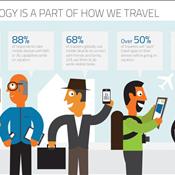 08-May-2019How to use Technology to Travel in Pakistan?
08-May-2019How to use Technology to Travel in Pakistan? -
 06-Oct-2019How to check Umrah Visa Status online
06-Oct-2019How to check Umrah Visa Status online -
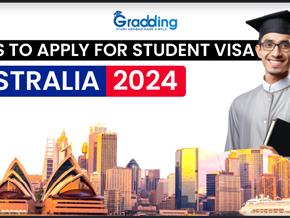 12-Jul-2023Guide to Student Visa Applications: Key Details for US, UK, Canada, and Australia
12-Jul-2023Guide to Student Visa Applications: Key Details for US, UK, Canada, and Australia -
 14-Apr-2025Karachi to receive four weekly AirAsia X flights beginning May 30.
14-Apr-2025Karachi to receive four weekly AirAsia X flights beginning May 30. -
 28-Apr-2025Australia Visa Fee for Pakistani and International Students May Increase if Labor Party Wins Election
28-Apr-2025Australia Visa Fee for Pakistani and International Students May Increase if Labor Party Wins Election -
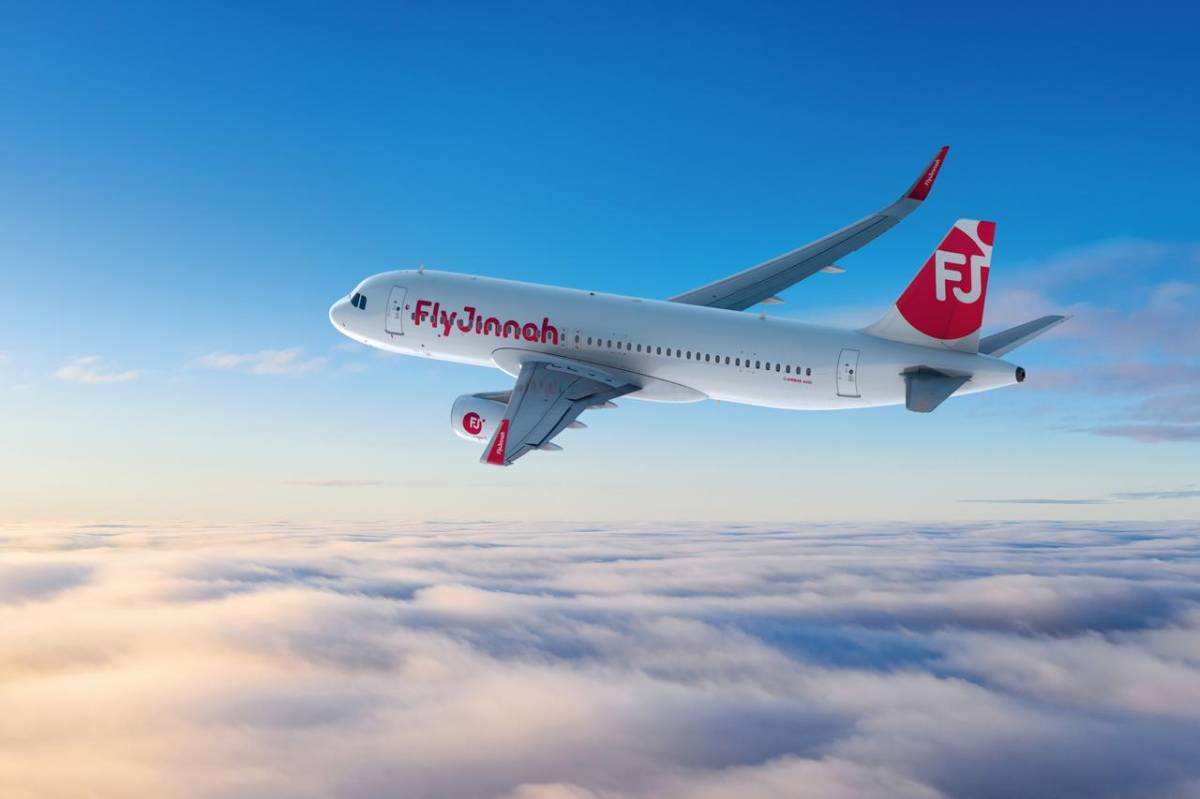 22-Aug-2025A New Era of Connectivity: The Launch of New Flight Routes to Jeddah and Madinah
22-Aug-2025A New Era of Connectivity: The Launch of New Flight Routes to Jeddah and Madinah -
 13-Aug-2025Navigating Your Spiritual Journey: Understanding Procedural and Non-Procedural Umrah
13-Aug-2025Navigating Your Spiritual Journey: Understanding Procedural and Non-Procedural Umrah -
 23-Aug-2019Top 5 London Hotels Perfect for the Pakistani Traveler
23-Aug-2019Top 5 London Hotels Perfect for the Pakistani Traveler -
 18-Apr-2024Indians getting offended by Maldives and now boycotting to travel there
18-Apr-2024Indians getting offended by Maldives and now boycotting to travel there -
 18-Oct-2019PIA Umrah Ticket Price 2019
18-Oct-2019PIA Umrah Ticket Price 2019 -
 22-Oct-2021Maldives Honeymoon Best Packages 2021 from Pakistan
22-Oct-2021Maldives Honeymoon Best Packages 2021 from Pakistan -
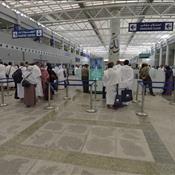 25-Jul-2023Saudi Arabia Introduces Instant e-Visa for International Travelers
25-Jul-2023Saudi Arabia Introduces Instant e-Visa for International Travelers
